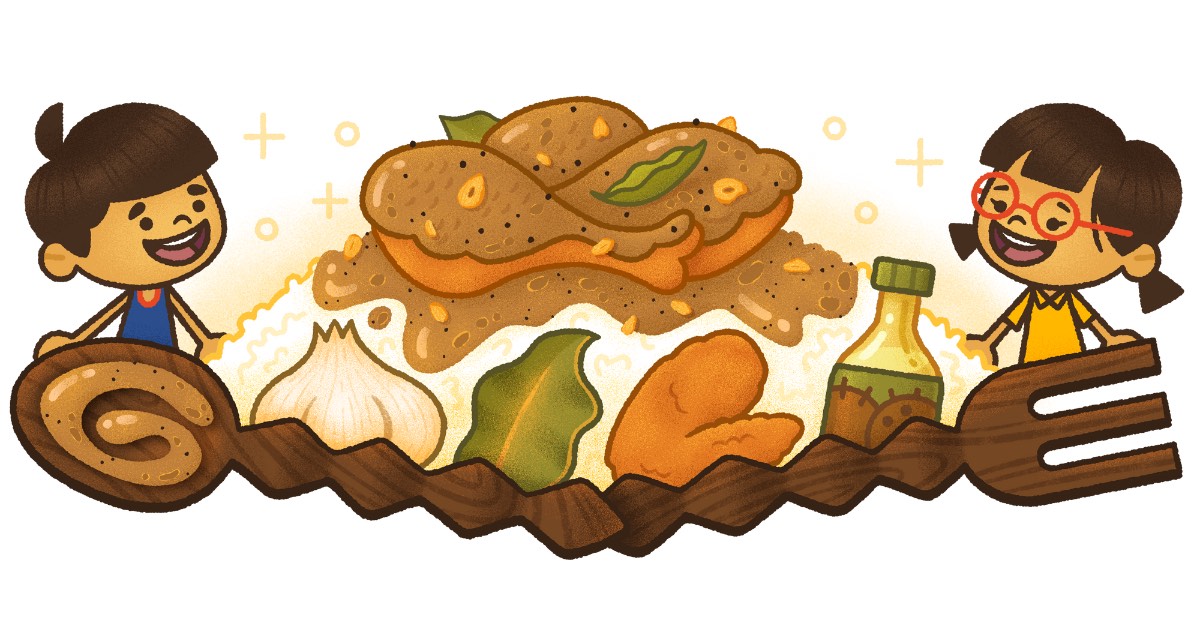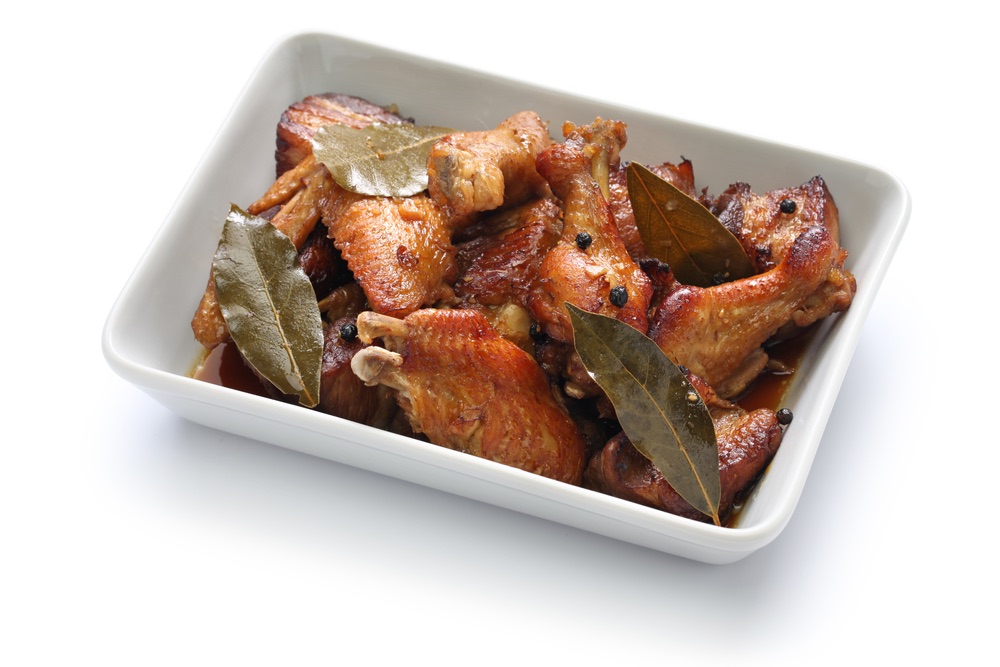Adobo becomes the first Filipino dish to be featured in Google Doodle
Think of Filipino food and one of the first things that would come to mind is adobo.
It’s sweet, sour, salty, sometimes tender, and sometimes even crisp. In his book The Ultimate Filipino Adobo: Stories Through the Ages, chef-restaurateur and food writer Claude Tayag wrote: “To say there are 7,640 recipes of our adobo is an understatement—there are as many kinds of adobo as there are households.” But whatever form, flavor, or texture it takes, we love it just the same. It's our “unofficial national dish,” as many Pinoys would say.
When Google teased that they would put the spotlight on a certain Filipino dish for the first time ever on Google Doodle, many people easily guessed it right even before it was unveiled to the media in advance on Tuesday, March 14.
The artwork, which is now live on the search engine, features its most common ingredients: vinegar, soy sauce, garlic, bay leaves, and chicken. It was designed by artist Anthony Irwin, who shared how his chicken adobo order from a local restaurant evoked fond memories of his past just by its distinct smell on a random day.
“It was so bright and nostalgic, and instantly filled my apartment with that familiar feeling—that this is exactly how things are supposed to be. I tried to capture that simple childhood joy of leaning in and savoring the kind of food that makes home feel like home,” he shared.

Adobo perfectly showcases the diversity of Filipino cuisine. And whether you’re in a fancy Pinoy restaurant, at home, or abroad and dearly missing it, this beloved dish is something you can always come back to.
"Adobo is a source of Filipino pride and identity. The mere mention of the word 'adobo' to Filipinos wherever they are in the world will easily get them craving the taste of home. Whether it's eaten with rice, pandesal, or just on its own, there is nothing like our very own adobo," said Tayag.
“You have a lonely graduate student in Oxford longing for home who would cook adobo in his dormitory, or a lonely construction worker in Dubai who would cook adobo to remind him of home, his family. When you travel overseas, you bring a part of yourself, of your culture, of your environment to a foreign land. The only cultural expression you can find is cooking and that’s adobo,” added award-winning book designer and food writer Ige Ramos.

Now, the question is: What makes it Filipino? To which, Tayag and Ramos replied the same thing: vinegar.
“It’s in our DNA. It’s a universal knowledge that anything you cook or preserve with vinegar prolongs the shelf life, but we have this fondness for acid, it balances the flavors. You can ‘adobo’ anything,” Tayag said, as Ramos seconded his thought. “It’s really embedded in our DNA, the penchant for sour things.”
To this day, we don’t have an official Filipino dish. But adobo and its versatility remain to be among the best ways of showing our multifaceted culture that makes us us.
Ramos could not have said it any better: “Adobo is a state of mind, it’s a state of being. It’s a noun, it’s a verb, it’s an adjective, it’s a construct. It’s part of our culture. It’s you, it’s me, it’s us. Adobo will never be them.”



